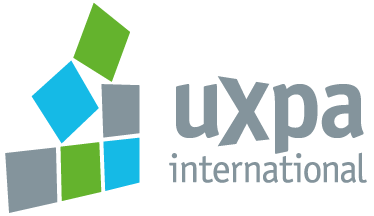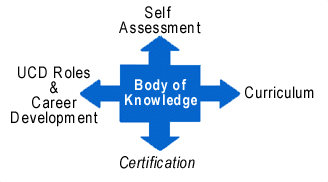Mission and Goals
The UXPA has initiated a long-term project to collate a comprehensive Body of Knowledge for the usability profession, which will provide an authoritative source of reference and define the scope of the profession
Mission
The User Experience Professionals Association (UXPA) Body of Knowledge project is dedicated to creating a living reference that represents the collective knowledge of the usability profession. Such a collection of knowledge for the usability profession will necessarily be broad and inclusive in scope, because our profession is inherently multidisciplinary and draws on a wide range of other practices.
We recognize that the body of knowledge should be derived from published literature, conference proceedings, and the experiences of practitioners accumulated over many years. It is not possible or desirable for this project to duplicate all of the existing resources. Rather, the outcome will be a guide that contains core material supplemented by pointers to existing resources, and continues to evolve as the practice of usability evolves.
Defining such a guide is an important step in our development as a profession because it represents a broad consensus regarding the profession itself and the range of knowledge, skills, and methods that should be mastered by practitioners in the field.
Goals
The guide to the usability body of knowledge will:
- Define the knowledge underlying the usability profession.
- Describe and provide pointers to methods, knowledge, and skills that are important for usability professionals.
- Promote the advancement, understanding, and recognition of the usability profession among those who interact with the usability community.
- Facilitate professional development for usability practitioners at any stage in their careers, as well as people who come to usability from other backgrounds/disciplines.
- Provide the basis for future curriculum development.
- Provide support for professional development and any future certification schemes.
- Promote integration and connections with related disciplines.
Intended Audience
The guide to the usability body of knowledge is targeted primarily to practitioners and educators, although it can also be used by managers, decision makers, and others who interact with usability professionals or need information about usability.
- Practitioners can use it to extend their skills, to find answers to questions, to get advice about situations that they face in their work.
- Educators and researchers can use it to prepare course materials, to structure a curriculum for a course or degree program, and to find authoritative references.
- Managers and decision makers can use it to understand the roles and skills of usability professionals, to identify the benefits of incorporating usability at a project and an organizational level, and to learn more about hiring employees or consultants.
- Collaborators and colleagues such as developers, analysts, and other project team members can use it to learn about usability and how it relates to their work.
- Policymakers, ranging from standards bodies and other professional associations to government legislators, can use it as a reference when setting standards or guidelines related to the use of technology.
Subject Areas
The guide to the usability body of knowledge will include the following subject areas:
- Methods and method selection
- User interface design principles and guidelines
- Organizational integration of usability (including managing usability teams, integrating usability into software development, introducing usability to organizations and clients, making a business case for usability)
- Roles, skills, and job categories for usability professionals
- Curriculum and courses
- Definitions of usability terms
- Related fields and disciplines
Additional subject areas may be added in the future.
Project History
The idea for this project grew out of the UPA’s 2001-2002 project to investigate certification for usability professionals, which included a survey of almost 1000 people on their attitudes towards certification.
A workshop held at the UPA 2002 Conference determined not to pursue certification at that time, and recommended to the UPA Board several prerequisites to certification, including the definition of a body of knowledge. This recommendation placed a body of knowledge in the center of several future activities, including defining a curriculum, identifying roles, creating a self-assessment tool, and, eventually, a certification.

A workshop held at the UPA 2004 Conference established a vision and scope for the guide to the body of knowledge, that has resulted in the activities described on this page, and a Poster at UPA 2005 was used as a focus to gather feedback from members.

